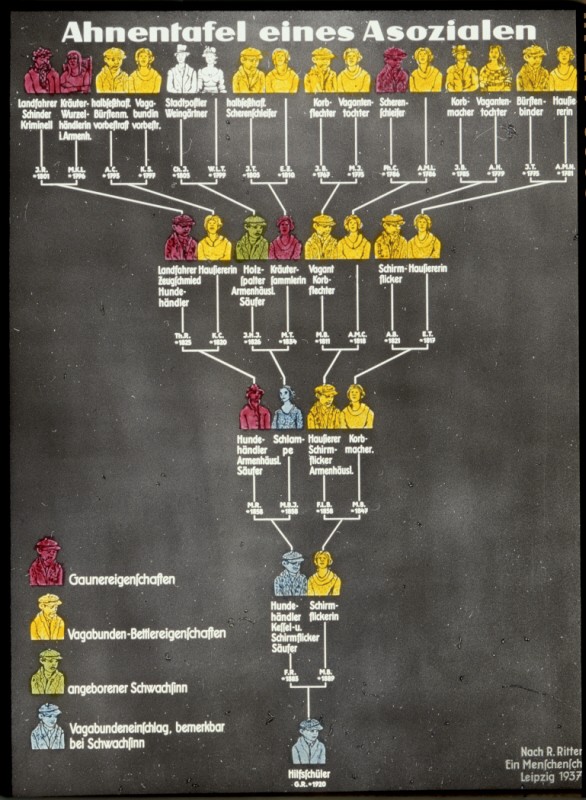
Decree against Public Enemies
The Decree against Public Enemies was one of a series of key decrees, legislative acts, and case law in the gradual process by which the Nazi leadership moved Germany from a democracy to a dictatorship.
Background
The Decree against Public Enemies (Volksschädlingsverordnung; literally, “Folk Pest Law”) was enacted on September 5, 1939, just four days after Germany invaded Poland and began World War II. It was an elastic clause that dramatically expanded the possibilities for criminal prosecution in Nazi Germany. Under the terms of the law, a crime against person or property, or against the community or public security, could carry a death sentence if the accused was charged with exploiting the special conditions of war—such as blackouts or a lack of police supervision—to carry it out. Further, according to the fourth paragraph of the law, death could be imposed “in accordance with the requirements of sound popular judgment [gesundes Volksempfinden] or the need to especially repudiate the criminal act.”
In the Nazi approach to law, offenses and legal determinations were deliberately defined in the vaguest possible terms. This enabled judges to retain the pretense of judicial independence while issuing verdicts that met the desires of the Nazi authorities. In practical terms, the Decree against Public Enemies paved the way for judges to impose the death penalty more freely, even for crimes that would otherwise have carried a lesser sentence. Adolf Hitler and the Nazi party used the advent of war—and the claim of rising criminality and “defeatist provocateurs”—to reject lenient sentences and to demand a far more frequent application of the death penalty.
It is worth noting that Volksschädlinge, the key term in the law's title, is translated as “folk pests” or “vermin.” As such, the law equates those exploiting the special conditions of war to carry out crimes with the type of agricultural pests that are destructive and generally outside the sphere of moral responsibility. Just as a gardener attacks the bugs and vermin that threaten his plants, so too, the Nazis believed, the national community had to eliminate those who compromised the health and well-being of the body politic.
The Decree against Public Enemies was perhaps the most frequently used legal basis for the approximately 15,000 death sentences handed down by the courts from 1941 to 1945.
Translation
(Translated from Reichsgesetzblatt I, 1939, p. 1679.)
The Ministerial Council for the Defense of the Reich decrees with the force of law:
1. Plunder in Evacuated Areas
1. Who plunders in evacuated areas or in voluntarily evacuated buildings or rooms will be punished with death.
2. The decision will be made, insofar as the Summary Military Courts do not have jurisdiction, by the Special Courts.
3. The death penalty can be carried out by hanging.
2. Crimes during Air Raids
Who commits a crime against the body, life, or property of a person using measures enacted in the defense against air raids in furtherance of the crime will be punished with penitentiary up to 15 years or with life in penitentiary and, in especially grievous cases, with death.
3. Crimes Endangering the Community
Who commits arson or other crimes endangering the community and thereby damages the ability of the German people to engage in national defense will be punished with death.
4. Use of Conditions of War as Grounds to Increase Criminal Penalties
Anyone who commits a crime using the special circumstances induced by the condition of war will be punished, overstepping the normal legal penalties, with penitentiary of up to 15 years, with life in prison, or with death in accordance with the requirements of sound popular judgment [gesundes Volksempfinden] or the need to especially repudiate the criminal act.
5. Simplification of the Procedure Used in the Special Court
In all proceedings before the Special Court the sentence must be carried out immediately, without respect to the usual time limits, in cases where the perpetrator was caught in the act or where guilt is otherwise readily apparent.
6. Areas of Jurisdiction
The provisions of this ordinance apply in the Protectorate of Bohemia and Moravia and also to persons who do not hold German citizenship.
7. Final Provisions
The Reich Minister of Justice will decree all the legal and administrative measures required for the implementation of this ordinance.
Berlin, September 5, 1939
Chairman of the Ministerial Council for Reich Defense: Göring, General Field Marshal
General Commissioner for the Administration of the Reich: Frick
Reich Minister and Chief of the Reich Chancellery: Dr. Lammers
Critical Thinking Questions
- What pressures and motivations may have affected members of the legal profession as the Nazi government consolidated its power in the 1930s?
- What is the appropriate relationship between a government and the judiciary?
- What is the appropriate relationship between ideology and the judiciary?

